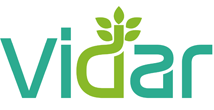

Seed producers in northern Europe had a mixed season. Early spring was good all round and in Denmark the good growing weather lasted till harvest. Unfortunately the weather broke in Denmark just as the harvest began. An unstable mixture of sunshine and rain made harvesting difficult. In the Netherlands the latter part of the growing season was very dry, resulting in a low filling of seeds.
Northern hemisphere harvests below average
The species that suffered most in Denmark was white clover. Poor pollination and unsuitable harvest weather reduced the yield almost by half. Yields were also down in smooth-stalked meadow grass, tall fescue and perennial ryegrass. The only species to do well was red fescue. An early harvest produced a yield just above average.
Harvest weather was better in the Netherlands. But it came at the end of a long dry period that led to a low yield in perennial ryegrass.
In North America, the growers in the west have recorded a below-average grass yields. Further north in Canada, the harvest was poor for perennial ryegrass.
Early start to spring buying season
The spring buying season started early. Demand was high for turf and forage seed, March was a record month for our shipping department. Cold weather during the second half of April and early part of May brought the market to an early close. Nevertheless 2017 will be remembered as a good year for grass and clover consumption.
Increased demand for turf
Demand for turf seed has been good in both the professional and consumer markets. An improving economic situation, with more infrastructure and house-building projects, has driven demand for turf grasses. Even in Southern Europe, where economies are improving at a slower rate, demand was up for turf grass.
Seed shortages have driven prices up for smooth-stalked meadow grass and hard and tall fescue. Seed imports from the USA were low, held back by limited availability and an unfavourable USD exchange rate. And following the disappointing harvests in Denmark, the Netherlands and North America, the balance between supply and demand is tight.
Source: DLF
NEWS
NEWS
- Turkey aims top 5 in seed trade in world2021-07-08Chairman of Turkish Association of Seed Growers (TÜRKTOB) Kamil Yılmaz said that the sector exported seeds valued at 136 million U.
- Precision agriculture can do wonders for Indian farming2021-07-08The worrisome reality in India is that agriculture is facing a crisis. In village after village, farmers are looking at selling th.
- India Bt brinjal: Bangladesh's model not fit enough for adoption2021-07-08When India is considering commercialising Bt brinjal in India by first studying Bangladesh’s “successful” model, the neighbour cou
- India Andhra Pradesh's push for zero budget natural farming inspires others2021-07-08Use of chemical pesticides in India, including those that are banned in other countries, has been a matter of concern and a raging.
- Metominostrobin market current trends and future aspect analysis by 20272021-07-08Metominostrobin market current trends and future aspect analysis by 2027The global metominostrobin market is predicted to increase
PRODUCTS





